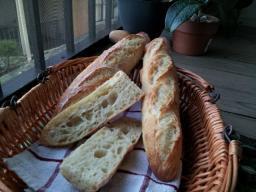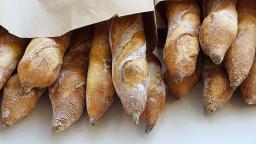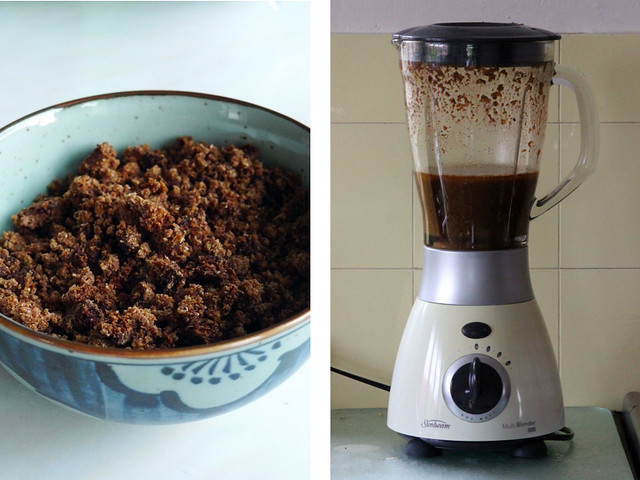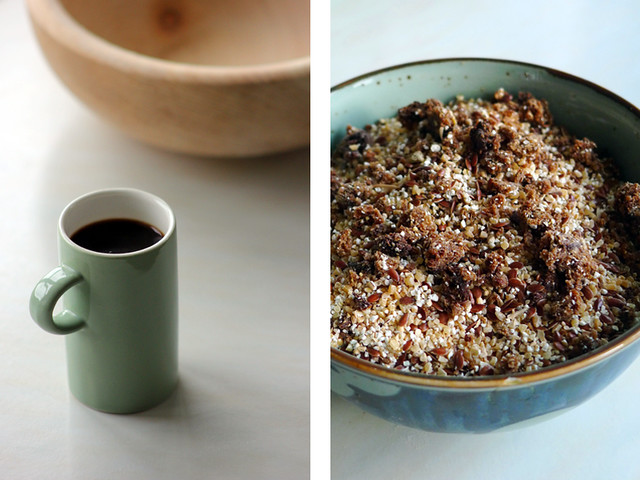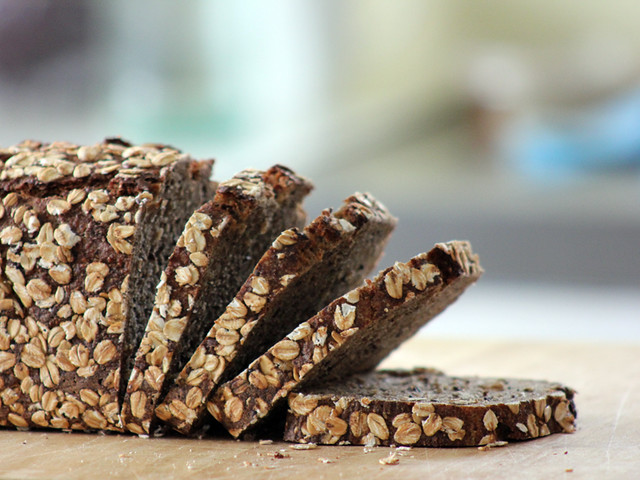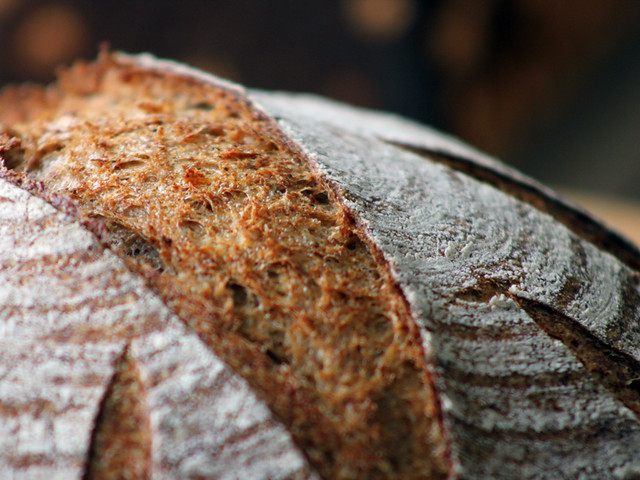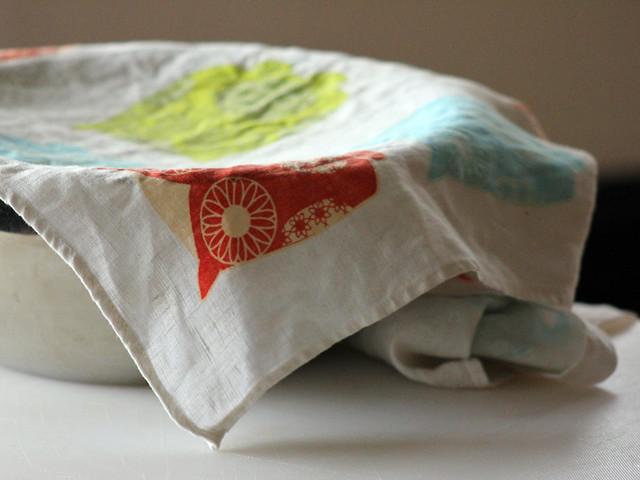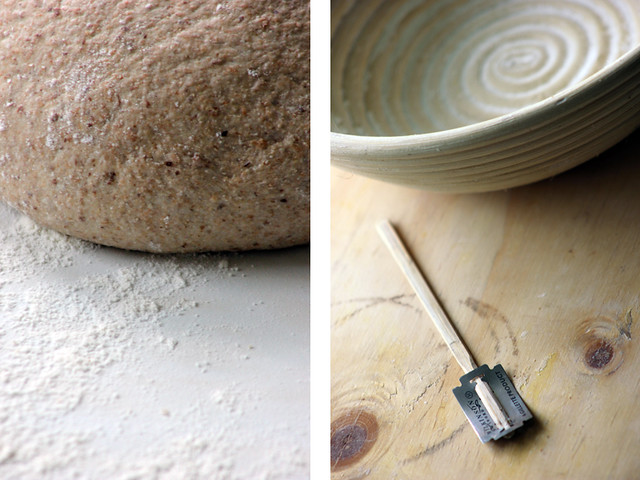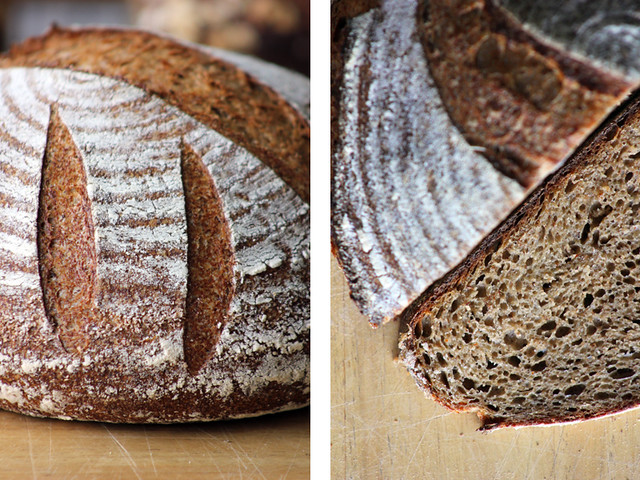
Lately I have been baking with flour home-milled from hard red winter wheat from Upinngil Farm in Gill Massachusetts. I have also been experimenting with sifting the milled flour to achieve different results, and after reading about bolting - see Andy's post and note below - with bolting as well. My first attempt at bolting using a knee-high nylon didn't go well. The less said the better. Then I realized that cheese cloth has a fine mesh and might possibly be well suited for the task at hand. So I have been playing around with using cheese cloth to bolt fresh milled flour, without much good baking results.

Today, I came back to it and made another attempt. I decided to use my regular white starter, rather than working with a whole wheat starter, which adds another layer of complexity. And also constrained the process by determining that I would only use the Upinngil whole wheat for the final dough.
I proceeded as follows:
1. Mill 514 g of wheat berries at medium setting
2. Sift with #24 wire strainer
3. Mill what is caught in the sieve at fine setting
4. Sift with #30 wire strainer
This process removed 50g of bran.
5. Place flour on top of a square of cheese cloth and form a bag by folding up corners and securing with a twist tie

6. Shake, bounce, bump, etc. into a wooden bowl. (Note this step takes awhile.)
At the end of this process I had 226g of golden flour with only tiny flecks of bran in it, and left in the cheese cloth was 226g of a coarse flour / semolina mix.
I decided to make two loaves - one with the more refined flour, and one with the less refined flour. They both came out quite breadlike.

The one with the refined flour was a bit better behaved than the other.
I would say both tasted good with the second loaf with a much more rustic, coarse crumb.
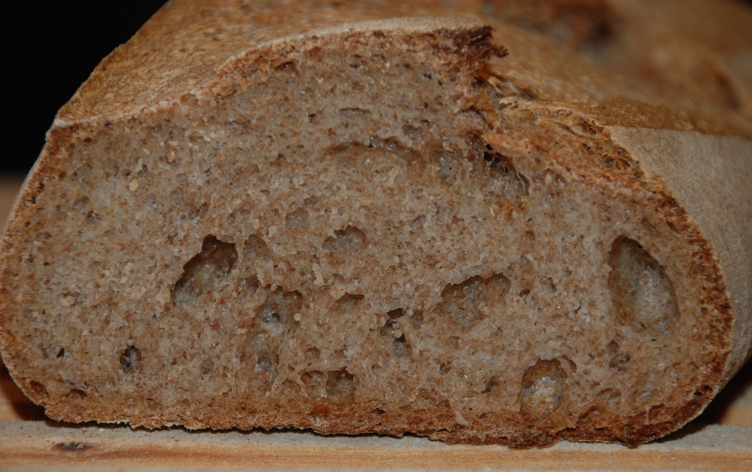
Here are the formulae:
Starter builds | | | | | |
12/7/2012 | | 2:30 PM | 9:30 PM | Total | Percent |
Seed | 29 | | | | |
KAAP | 16 | 47 | 95 | 158 | 95% |
Whole Rye | 1 | 3 | 5 | 9 | 5% |
Water | 12 | 34 | 67 | 113 | 67% |
| | | | 280 | 9.7 |
12/8/2012 | | | | | |
| Final | Starter | Total | Percent | |
KAAP | | 71 | 71 | 24% | |
Whole Rye | | 4 | 4 | 1% | |
Bolted Upinngil Tier 1 | 226 | | 226 | 75% | |
Water | 149 | 50 | 199 | 66% | |
Salt | 5 | | 5 | 1.7% | |
Starter | 125 | | | 25% | |
| | | 505 | | |
Factor | 0.45 | | | | |
| | | | | |
| Final | Starter | Total | Percent | |
KAAP | | 71 | 71 | 22% | |
WR | | 4 | 4 | 1% | |
Bolted Upinngil Tier 2 | 226 | | 226 | 69% | |
Med Rye | 25 | | 25 | 8% | |
Water | 182 | 50 | 232 | 71% | |
Salt | 7 | | 7 | 2.1% | |
Starter | 125 | | | 23% | |
| | | 565 | | |
Factor | 0.45 | | | | |
| | | | | |
I mixed the first dough for 10 minutes, and the second for 20. It was necessary to add a bit of medium rye to the second dough to make it adhere. I was very worried about over fermenting and proofing these loaves so I erred on the side of under-doing it. I fermented the first loaf for 2 hours, and the second for 1.5 hours, both with two stretch and folds. Then proofed each of them for only 45 minutes. They were baked together at 450F with steam for 20 minutes, and without for 25.
Note: Bolting is an old (say 17th century) method of refining flour by passing milled wheat through successively finer and finer cloth mesh tubes. See for instance http://www.angelfire.com/journal/millbuilder/boulting.html%C2%A0%C2%A0 So technically I have done a hybrid of metal sifting and cloth bolting, as I only have one cloth mesh size.
[Addendum: For those of you who think that milling, sifting, and now bolting is too messy, please note that only 13g of flour was missing in action. I'm sure it will be all cleaned up in the fullness of time. ]




